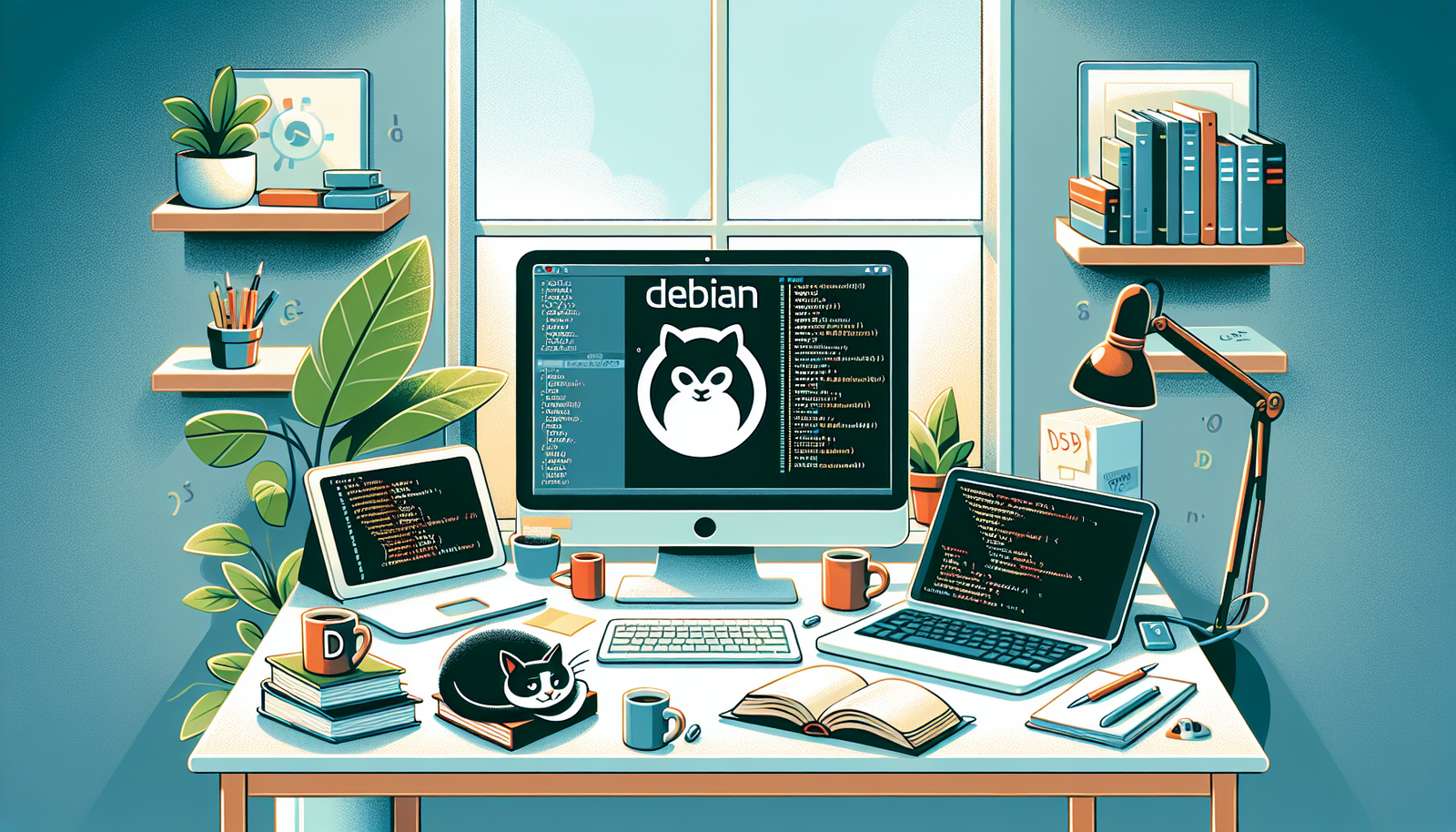How to Set Up a Debian Development Environment
Setting up a development environment is a crucial step for programmers and software developers. This guide will walk you through the process of establishing a robust Debian development setup, leveraging Debian’s renowned stability and versatility.
Introduction
Debian is favored for its stability, security, and extensive software repositories. This guide covers installation, configuration of essential tools, and programming languages, ensuring your environment is ready for your next project.
Prerequisites
System Requirements
Ensure your hardware meets the following minimum specifications:
- Processor: 1 GHz or faster
- RAM: At least 1 GB (2 GB or more recommended)
- Disk Space: A minimum of 10 GB for the operating system and development tools
Software Requirements
- Debian Installation Media: Download the ISO file from the official Debian website.
- Basic Understanding of the Linux Command Line: Familiarity will be beneficial as many steps involve terminal commands.
Installing Debian
Downloading the Debian ISO
Visit the Debian download page and select the version that suits you. The Stable version is generally recommended for reliability.
Creating a Bootable USB
To install Debian, create a bootable USB drive. Useful tools include:
- Rufus (Windows)
- balenaEtcher (Cross-platform)
- dd command (Linux)
Using balenaEtcher:
- Download and install balenaEtcher.
- Insert your USB drive (ensure it’s backed up as this will erase all data).
- Open balenaEtcher, select the Debian ISO, and choose the USB drive. Click “Flash.”
Installation Process
- Booting from USB: Restart your computer and press the key to access the boot menu (usually F2, F12, or Del).
- Selecting Installation Options: Choose either the graphical or text-based installer.
- Partitioning the Disk: Opt for guided partitioning (recommended for beginners).
- User Account Setup: Create a user account and set a password.
- Finalizing the Installation: Follow the prompts to complete the installation, then reboot your system.
Configuring the System
Updating the System
Once logged in, update your package list with:
sudo apt update
sudo apt upgrade
Installing Essential Development Tools
Install commonly used development tools using the package manager:
-
GCC (GNU Compiler Collection):
sudo apt install build-essential -
Make:
sudo apt install make -
CMake:
sudo apt install cmake
- Git:
sudo apt install git
Setting Up a Code Editor/IDE
Choose a code editor or IDE that suits your workflow:
-
Visual Studio Code:
sudo snap install code --classic -
Atom:
sudo apt install atom -
Vim:
sudo apt install vim
Installing Programming Languages
Debian supports various programming languages. Here’s how to install some popular ones:
Python
-
Installing Python:
sudo apt install python3 python3-pip -
Setting Up a Virtual Environment:
pip3 install virtualenv virtualenv myenv source myenv/bin/activate
Node.js
-
Installing Node.js:
sudo apt install nodejs npm -
Setting Up a Basic Project:
mkdir mynodeapp cd mynodeapp npm init -y
Other Languages
-
Java:
sudo apt install default-jdk -
Ruby:
sudo apt install ruby-full
Setting Up Database Management
Choose a database system based on your project needs:
- MySQL: A widely used relational database.
- PostgreSQL: An advanced open-source relational database.
- SQLite: A lightweight database for smaller applications.
Example for MySQL Installation:
sudo apt install mysql-server
sudo mysql_secure_installation
Testing the Development Environment
To ensure everything works, create a sample project, such as a simple Python web application using Flask:
Create a Basic Application
-
Install Flask:
pip install Flask -
Create a file named app.py:
from flask import Flask app = Flask(__name__) @app.route('/') def hello_world(): return 'Hello, World!' if __name__ == '__main__': app.run(debug=True) -
Run the Application:
python app.py
Navigate to http://127.0.0.1:5000/ to see your app in action.
Best Practices
Version Control with Git
Using Git for version control is essential in managing changes:
git init
Regular Backups
Regularly back up your work to prevent data loss.
Documentation of the Development Process
Maintain clear documentation of your code and processes for easy collaboration.
Troubleshooting Common Issues
For installation problems, refer to Debian documentation or community forums. Package installation failures? Use:
sudo apt --fix-broken install
Conclusion
By following this guide, you can set up a Debian development environment efficiently. With a properly configured environment, you’re poised for enhanced productivity in your development endeavors.

